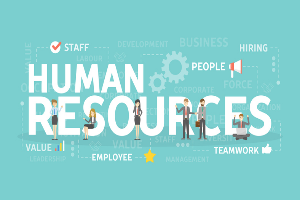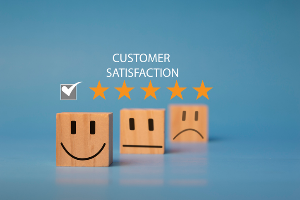
Professionals in the nonprofit sector are often more motivated by the mission over a high salary and interested in pursuing leadership roles that enable them to make a bigger impact towards their mission.
Many nonprofit executives and managers strive to understand how to improve leadership among their dedicated team members. Leadership in this context encompasses more than just guiding the organization towards its goals. It involves inspiring a team, cultivating a passionate and dedicated environment, and fostering a sense of shared purpose and camaraderie. It is important to remember that effective leadership goes beyond mere guidance; it involves creating an engaging and empowering atmosphere for everyone involved.
The challenges that nonprofits typically face, including limited resources, high community and peer expectations, and the need to maximize impact, require more and more unique effort from leaders. Nonprofit leadership requires individuals who possess a combination of strategic and resourceful capabilities, a deep connection to the organization’s mission, and an ability to embody its values.
While some of the necessary characteristics for leadership roles are organic to an individual, there is plenty that you can do to maximize natural talents by committing to nonprofit leadership training for your staff.
Please continue reading to discover how to identify potential leaders and how to develop a leader. With nonprofit executive leadership training, you can create a steady pipeline of caring and dutiful future managers and executives.
Tips for Improving Leadership Skills
Although some professionals are born with some natural leadership skills, they may need some guidance to hone and develop those skills to become a leader within your organization.
In this section, we delve into some practical and actionable tips for how to improve leadership. These steps are crucial for driving your organization forward with potential talent from among your existing and future team members.
1. Offer Broader Exposure to Your Organization’s Mission and Goals
As you strive to elevate and empower nonprofit employees to become leaders, they should understand as much about the nonprofit sector and your organization’s overarching mission as possible. They need to know more than their specific tasks within their department to see themselves moving up in your organization.
2. Provide Opportunities to Take on New Challenges
If you spot potential in an employee, help them develop their skills by providing a well-rounded perspective on daily challenges within your organization. Ask them to cross-train for roles in other departments to allow them to experience different roles and the accompanying challenges and rewards, of various positions.
3. Encourage Employees to Enhance Soft Skills
Soft skills are essential in nonprofit environments. As a leader, you likely find yourself using your communication, critical-thinking, problem-solving, time management, and teamwork skills daily. These skills are crucial to nonprofits operating with a limited budget and staff, which is not uncommon in this sector.
4. Assign Promising Employees Challenging Projects
When you identify potential leaders, it’s a good idea to offer them new opportunities that challenge them in different ways to see how they rise to overcome them and to continue sharpening their natural abilities.
5. Serve as a Support Source
Become a mentor to employees who show an interest in becoming a leader within your organization. Ask for insights and show trust and respect even when your decision differs from the employee’s preferred course of action.
6. Offer Training Opportunities
Whether your organization has the resources to create and offer a training program or if you decide to invest in one, some formal training can be beneficial. Well-structured and professional advice, guidance, and support can ensure effective learning and help track an employee’s progress.
How to Identify Potential Leaders
Often, identifying potential leaders begins with the hiring process. When you seek qualities such as passion for the nonprofit sector and your specific mission, as well as the above-noted soft skills and a desire to learn and grow, you need to nurture individuals, creating a steady pipeline of leadership talent.
At UST, we understand how challenging it is when trying to determine how to develop leadership skills in others, nurturing future leaders when you work with limited resources, including the on-hand staff to train top talent. We offer an expansive suite of nonprofit HR solutions for organizations that don’t have full-time HR departments, and can help you identify, train, and nurture talent to ensure you have a group of prepared and enthusiastic leaders.
Learn more about our services first-hand by signing up for our FREE 60-day trial, or contact us to discuss your nonprofit’s unique HR needs.
SOURCES
https://www.michaelpage.com/advice/management-advice/development-and-retention/how-develop-your-future-leaders
https://www.investopedia.com/terms/s/soft-skills.asp#:~:text=Soft%20skills%20can%20also%20be,carried%20over%20to%20any%20position.
https://www.cio.com/article/234848/6-leadership-qualities-to-look-for-when-hiring.html
https://www.indeed.com/career-advice/career-development/how-to-develop-leaders
https://www.qooper.io/blog/leadership-training-for-nurturing-a-future-leader
https://businessleadershiptoday.com/how-does-hr-help-leadership-development

When it comes to running a nonprofit organization, one of the most important aspects is creating a productive and safe workplace for your employees. Building a Human Resources department is an essential part of ensuring that your organization’s employees are equipped with the necessary resources, support, and guidance to succeed in their roles. In this blog, we’ll discuss the 5 top benefits of creating a Human Resources department and share how UST Workforce Solutions can help you achieve your HR goals.
1. Recruitment and Retention
One of the primary functions of the Human Resources department is to attract and retain top talent. A well-organized HR department can assist with the recruitment process by creating job descriptions, screening applications, and conducting interviews. UST HR Workplace can help your nonprofit organization streamline this process by providing job description tools, downloadable forms, and checklists, and provide access to HR experts.
2. Compliance and Risk Management
Compliance and risk management are critical aspects for any nonprofit organization, and a Human Resources department can help ensure that your organization is meeting all legal requirements and avoiding risks. UST HR Workplace offers a cloud-based HR platform that provides templates, trainings, and expert guidance to help nonprofits stay compliant with state and federal regulations.
3. Employee Training and Development
Nonprofit organizations rely heavily on the skills and expertise of their employees to achieve their mission. HR departments play a crucial role in identifying training needs and ensuring that employees have access to ongoing development opportunities. As part of our HR Workplace platform, you have access to over 300+ on-demand employee training courses, including topics on diversity and inclusion, harassment prevention, and leadership development.
4. Workforce Management
A Human Resources department helps manage the workforce by tracking employee attendance, performance, and compensation. With UST, nonprofits can access an online employee handbook builder and gain expertise on managing employee relations.
5. Strategic Planning
A well-organized HR department can help inform strategic planning by providing insights into trends, employee needs, and organizational strengths and weaknesses. With access to UST HR Workplace, nonprofits can leverage expert guidance to develop long-term plans that align with their mission and meet their workforce needs.
Overall, building a dedicated HR department can provide significant benefits for nonprofits. From ensuring compliance to attracting and retaining top talent to creating a positive workplace culture, human resources is a crucial element of nonprofit success. UST HR Workplace offers a FREE 60-day HR trial to help nonprofits see the benefits for themselves, so why not give it a try? Contact us today to learn more!

Question: Are there any questions we should avoid when interviewing job candidates?
Answer: Yes. You should avoid questions that cause an applicant to tell you about their inclusion in a protected class. Don’t ask about race, national origin, citizenship status, religious affiliation, disabilities, pregnancy, sexual orientation or gender identity, past illnesses (including use of sick leave or workers’ comp claims), age, genetic information, or military service. You should also avoid asking about things that might be protected by state law (e.g., marital status and political affiliation). If you were to ask any questions pertaining to these matters, rejected candidates could claim that your decision was based on their inclusion in these classes rather than their credentials.
The types of questions you ask a job candidate should be job-related and nondiscriminatory. This may seem obvious, but employers sometimes ask problematic questions because they believe they are job-related. For instance, an interviewer might ask an applicant if they have any back issues when they are trying to determine if the applicant can lift 25 pounds repeatedly throughout the day. Or when seeking someone to fill a position on Sundays, they might ask if the applicant is Christian or goes to church. Both of these questions are plainly discriminatory and could get an employer into significant trouble.
Thankfully, there’s a way to get this information without asking discriminatory questions. Instead of considering the things that could get in the way of an applicant doing the job and asking about those, frame the question so that it’s about the essential duties of the position. Can they lift 25 pounds all day every day? Are they available on Sunday since that’s the day you are hiring for? Simple adjustments and precautions can go a long way toward a compliant interview process.
On a final note, you should also avoid questions that are asked purely out of curiosity (Do you have children? What kind of accent is that? What do you do for fun?), as those can easily be misconstrued as discriminatory. When in doubt, return to the job description. Make sure your questions are directly related to the essential duties and answer the ultimate question—can the applicant do the job?
This Q&A was provided by Mineral, powering the UST HR Workplace. Have HR questions? Sign your nonprofit up for a FREE 60-day trial here. As a UST member, simply log into your Mineral portal to access live HR certified consultants, 300+ on-demand training courses, an extensive compliance library, and more.

Nonprofit organizations improve communities by providing impactful services, including everything from educating, sheltering, healing, nurturing and so much more. Nearly everyone in the United States has benefited from a nonprofit organization in one way or another. The roughly 1.3 million nonprofit organizations in the U.S. need assistance to operate and help as many people as possible.
Internship programs offer numerous benefits to nonprofit organizations. Interns provide much-needed assistance, unique skill sets and fresh ideas. Internships can also lead to new hires that help the organization operate and grow for years to come. Even interns who do not become full-time employees often remain proponents of the organization.
There’s no denying that nonprofit internships are valuable, but finding the right interns can be a challenge. Discover how you can recruit and hire interns who will have a positive impact on your organization through their hard work and unique skills:
Where to Locate Your Nonprofit Interns
Nonprofit internships offer many benefits to the organization, as well as to the interns themselves. However, locating the right recruits may feel like finding a needle in a haystack at times. The following are several places to find quality recruits, so you can spend less time searching and more time offering your much-needed services.
College Career Offices
College students make excellent interns, as they’re often eager to learn about the industry they study. University career centers often have partnerships with businesses and nonprofit organizations and counselors can connect interested students with your nonprofit. This option often results in quality interns, as the students enter the career office seeking such opportunities.
Online Platforms
Online job listings are becoming some of the most popular places for potential interns and employees to find work. Sites such as SimplyHired and Indeed[BM1] allow you to post your internship opportunity and review candidates online. Many online job platforms offer special rates or free listings to registered nonprofits.
Social Media
A strong social media presence is essential to the success of a nonprofit organization. It’s also one of the best ways to reach Gen Z, millennials, and older demographics. Use Instagram, Facebook, TikTok and other social media outlets to launch campaigns and sponsored posts advertising your nonprofit organization internships.
Word of Mouth
Word of mouth is one of the easiest and most effective ways to get the news out about your available nonprofit organization internships. Let current employees and your community know about available opportunities. Your organization’s positive reputation will help the word travel fast. Someone on your current team may already have a friend or acquaintance in mind.
6 Tips for Hiring Interns
How you hire interns can have a significant impact on their experience at your nonprofit organization. The following are a few effective tips to help ensure your potential interns understand what the position entails and how the internship can be mutually beneficial.
1. Explain the Internship Requirements Thoroughly
A key factor in finding the right interns and better ensuring they meet your expectations is being transparent. Interns should fully understand the responsibilities of the position, their expected schedule, and how you’ll measure their performance.
Many interns are juggling internships with school and or jobs. It’s important for them and the organization to know if the role is something they can handle. Now is also the time to explain what an ideal candidate looks like and the specific skills and characteristics you expect the intern to have.
2. Establish a Consistent Screening Process
A screening process narrows your list of potential candidates which helps you avoid hiring individuals who do not fit your organization’s needs. Your screening process may include the following methods and any others that are more specific to your nonprofit.
3. Ensure Each Intern Has a Supervisor
Interns are typically seeking work experience or looking to fulfill requirements for a specific qualification. Assigning a supervisor to new interns throughout the hiring process and beyond will help ensure they understand their responsibilities. The supervisor is also the first person an intern can consult with questions or concerns.
4. Emphasize the Organization’s Impact
Individuals seeking nonprofit internships are often looking for meaningful work that has a positive societal impact. Ensure that potential interns understand the cause the organization supports, how they’re increasing awareness, and how the intern’s position will help the organization achieve its goals.
5. Reflect and Offer Feedback Often
Interns are often eager to learn and advance in their careers. Establish time for interns to discuss the position and their experience as new recruits with their supervisors. While this may include reflecting on their goals or feelings about the organization, it’s also a time for interns to provide feedback.
Nonprofit internships are designed to benefit the intern and the organization. Interns can offer valuable insight into the pros and cons of the organization’s operations, scheduling demands, the recruitment process and more.
6. Remain Adaptive
Being able to adapt is essential to an organization’s success. Remember that not all interns will become full-time employees and that your internship program may change as your organization grows or develops.
Keep an open mind when assessing potential interns, as some may prove to be greater assets than their resumes can express. An intern you thought was an ideal hire may not work out, while a less-qualified intern exceeds your expectations.
UST offers virtual HR solutions for organizations that don’t have full-time HR departments. We provide a complete range of HR resources to resolve HR issues quickly and smoothly. Our solutions support the unique needs of nonprofits, so you can stop worrying about HR concerns and focus on extending your organization’s positive impact.
For more insight into human resource best practices for nonprofits, join our newsletter.
Sources:
https://www.chooseust.org/ust-hr-workplace
https://www.chooseust.org/solutions-overview
https://www.volgistics.com/blog/how-to-recruit-nonprofit-interns/
https://www.wholewhale.com/tips/where-to-look-for-nonprofit-interns/
https://www.councilofnonprofits.org/about-americas-nonprofits/nonprofit-impact-communities

Our world continues to progress and it has become increasingly important for organizations to prioritize Diversity, Equity, and Inclusion (DEI) awareness. Nonprofits, in particular, have a unique opportunity to lead the way in this area, as they are often centered around causes that directly impact marginalized communities. Furthermore, they also play an integral role in shaping society by addressing various social issues. As a nonprofit leader, you have a pivotal role in fostering a culture of DEI awareness within your organization. In this blog, we will explore actionable strategies that nonprofits can implement to cultivate and uphold a vibrant culture of DEI awareness.
Let’s dive in!
Train and Educate Your Staff and Board Members
Training and educating staff and board members are practical measures nonprofits can take to develop a culture of DEI awareness. Staff and board members who understand DEI concepts and issues like unconscious bias, microaggressions, and systemic racism can contribute to charting ways towards a more inclusive and equitable culture.
Include DEI in Organizational Policies
Inclusion of DEI practices in the organization’s employee handbook is another way to promote and foster a culture of awareness. The policies developed for your organization should state the organization’s commitment to DEI and create accountability provisions. This sends a message to employees, board members, and stakeholders of the importance placed on cultivating an inclusive workplace.
Encourage Employee Resource Groups
Employee Resource Groups (ERGs) provide an opportunity for employees to come together, share ideas, and connect with colleagues around shared interests or identities. This platform can help employees feel more seen and heard in the workplace, improving employee engagement and retention rates.
Foster Inclusivity in Recruiting and Hiring Process
Another way to build a DEI-oriented culture is by ensuring recruiting and hiring processes are also inclusive. The organization should examine its recruiting/hiring process and assess how it screens new applicants. It’s valuable to select candidates based on qualifications, and not based on appearance, background, or cultural fit. Diversity of thought helps drive your strategy, brings new ideas, and overall benefits your organization. Offering opportunities and a welcoming environment to underrepresented groups in society can help cultivate a culture of inclusivity.
Regularly Measure and Evaluate DEI Metrics
Evaluation and accountability are critical when developing a culture of DEI awareness. Nonprofits should set goals that measure their progress towards creating an inclusive culture, and these goals should be reviewed and reported the same way as financial performance. Regular evaluation and metrics help nonprofits to identify areas of success and shortcomings, thereby leading to areas of opportunity.
As a nonprofit leader, creating a culture of DEI awareness is an essential step for any nonprofit organization striving to be a top performer in fulfilling its mission. Nonprofits can foster a culture that embraces diversity, equity, and inclusion by implementing key strategies. These include educating employees, enhancing organizational policies, fostering inclusive hiring practices, encouraging employee resource groups (ERGs), and measuring DEI metrics. This approach not only improves engagement, but also fosters an inclusive and collaborative environment. Overall, this collective effort will elevate the impact and sustainability of the nonprofit’s mission.
Raising awareness and sparking conversations around DEI concepts, historical context, and current issues relevant to your cause is crucial. Consider hosting workshops or training sessions facilitated by outside experts who can provide valuable perspectives and create a safe space for these necessary conversations.
At UST, we understand the challenges faced by nonprofit leaders in terms of time and budget constraints. That’s why UST HR Workplace is here to help streamline the support your HR needs. Sign up today for a free 60-day trial and gain access to our live HR certified consultants, a library of 300+ on-demand training courses, and a comprehensive compliance library. We are here to empower you with the tools and training necessary to cultivate an inclusive and supportive environment.

Question: We’ve transitioned to a remote-first workforce. How can we keep our employees and managers engaged with video meetings and messaging apps—especially those employees that are missing the social aspects of working together physically?
Answer: Even with video conferencing and messaging apps, fully involving remote employees in team and company meetings remains a challenge. There may be no replacing the experience of being physically in the room, but you can take steps to make these meetings more productive and inclusive.
The most important thing to remember when “meeting” with remote employees is that you can’t conduct the meeting in the same way as you normally do when everyone is physically present. You have to find a way to replace the advantages that close proximity has, especially the ease of reading body language and picking up social cues. These, unfortunately, do not translate well over the screen or the phone. So, what can you do?
What remote employees need to fully participate in meetings is space and time to speak. You can provide this space and time in a few ways. First, if there are some physically present participants, ask them to pause for a second before jumping into the conversation. This gives remote employees time to get a word in, plus it helps counter any time delays caused by the conferencing technology. Second, whoever is leading the meeting should regularly invite remote employees to add anything if they have something to say, preferably before moving on in the agenda. Third, when possible, have a remote employee lead the meeting or a section on the agenda. This focuses attention on the remote speakers and can help remind everyone that the meeting isn’t just happening in the physical room. Finally, if a group of remote employees are located in the same workspace, occasionally setting their site as the physical meeting space can help your non-remote employees get a feel for the challenges of being remote during a meeting.
Some preliminary work before the meeting can also help make the meeting itself more efficient. First, test any systems ahead of time so that they’re working for everyone when the meeting starts. Second, email the agenda out so everyone knows what to expect. Third, assign someone in the meeting room to be the contact person that remote employees can email or message if they have questions, concerns, or issues.
After the meeting, check in with any remote employees and ask them to be candid about their experience. What worked well and what could be improved? See what you can do to accommodate them in the next meeting.
You may not be able to fully replicate the experience of physically being in the room, but taking these steps can enable remote employees to feel more involved and make the meeting itself run more smoothly.
This Q&A was provided by Mineral, powering the UST HR Workplace. Have HR questions? Sign your nonprofit up for a FREE 60-day trial here. As a UST member, simply log into your Mineral portal to access live HR certified consultants, 300+ on-demand training courses, an extensive compliance library, and more.

Nonprofit Burnout
Did you know that nearly a quarter of U.S. workers experience burnout? Nonprofit burnout numbers are even higher, with 50% of nonprofits experiencing high burnout levels.
The impact of burnout can lead to low employee morale and high turnover rates for nonprofit employees. Without identifying burnout and helping nonprofit employees manage it, your employees may decide to leave, or may have trouble accomplishing everyday tasks. These conditions could lead to limited results for the community your organization intends to serve.
Have you noticed burnout symptoms among your nonprofit employees and volunteers? Do you know the symptoms?
In this blog post, we’ll answer these questions and discuss what you can do to preserve good work- life balance, while prioritizing mental health and well-being to prevent nonprofit burnout.
What Is Nonprofit Burnout?
Burnout is a phenomenon that has become all too common in the workplace. It is typically the result of chronic workplace stress without proper attention and management.
There isn’t necessarily a medical diagnosis for this condition, but it is a mental health concern that can lead to deceased physical and mental health when it goes without recognition and correction.
Your employees likely love what they do for your nonprofit organization, but that doesn’t mean they are immune to the effects of prolonged stress that frequently leads to burnout.
While nonprofit work is meaningful and rewarding, it can also become emotionally draining for nonprofit staff due to the sense of urgency to improve the community. It isn’t unusual for nonprofit team members to work to the point of overworking themselves, and neglect self-care and their own mental well-being.
What Does Employee Nonprofit Burnout Look Like?
You probably know when you are asking more of your nonprofit employees. However, you may not be able to detect precisely when they are taking their duties and efforts beyond reasonable limits. Nonprofit burnout typically happens when employees are overloaded with work for a long period of time or lack adequate resources and time to do the necessary tasks.
If you know how to identify burnout among your nonprofit workers, it’s the first step in helping them.
As a nonprofit leader, note that these characteristics include:
6 Tips to Prevent Nonprofit Burnout
Fortunately, there are ways to help your valued nonprofit employees avoid or recover from nonprofit burnout.
1. Create a Checklist of Nonprofit Burnout Indicators
Detecting signs of burnout is a crucial first step in preventing or halting this damaging condition. You can start by using the above-noted characteristics of burnout to better ensure you notice the signals as early as possible.
2. Connect with Your Nonprofit Team Members Regularly
Whether your team members work on-site or in a remote or hybrid model, conduct regular meetings in-person or via a video conference platform. Ask your team members how things are going to make sure everyone’s has a balanced workload.
Let everyone know that you want them to speak up if they feel overwhelmed, and that you want to find a way to offer support if they do. It is also important to ask your nonprofit team members to offer support to one another when possible.
3. Promote Work-Life Balance
No matter how important your nonprofit’s mission, your employees’ health is vital. If they can’t work effectively, your nonprofit and the community you serve will suffer. Model healthy workplace behaviors that focus on work-life balance. Encourage employees to practice and prioritize self-care and setting boundaries.
4. Establish and Foster a Healthy Workplace Culture
Much of what we propose serves as establishing a good workplace culture, but there are some intentional steps to accomplish this, including the following:
5. Address Changes in Attitude and Behavior Among Employees
With the list of indicators in mind, if you detect drastic changes in a nonprofit employee’s attitude or behavior, it’s best to address this as soon as possible. Take a gentle approach and start by sending an email asking if everything is OK.
If you don’t find this strategy helpful, ask the employee to join you for a private meeting in your office. Let him or her know that it is OK to discuss problems, concerns and stressors — and that you are there to serve as support.
6. Remind and Encourage Employees to Take Time Off
It’s important for employees to use their PTO to maintain good mental, physical and emotional health — especially when working hard in the nonprofit sector. Many workers find it easy to skip days off to finish a project, but the potential for stress and burnout are too great. Remind employees that their project will be ready for them when they return and that, if necessary, other employees can help.
We hope you can help your dedicated employees avoid nonprofit burnout with these ideas. If you need more help, UST offers many solutions that help identify issues in your nonprofit organization.
Contact us if you need additional help to reduce nonprofit unemployment and HR liability.
Sources
https://www.mckinsey.com/mhi/our-insights/addressing-employee-burnout-are-you-solving-the-right-problem
https://www.goodera.com/blog/coping-with-nonprofit-burnout
https://www.urban.org/urban-wire/addressing-burnout-critical-social-sectors-success
https://nonprofitquarterly.org/avoiding-burnout-and-preserving-movement-leadership/
https://www.thehortongroup.com/resources/11-tips-for-nonprofits-to-prevent-employee-burnout/
https://www.funraise.org/blog/mental-health-matters-when-the-goalposts-are-always-moving-nonprofit-burnout-is-a-given

As a leader of a nonprofit organization, it is imperative to ensure that your clients are getting the customer service they desire. Even with a well-trained and dependable staff, unforeseen circumstances can arise, leading to your staff having to effectively de-escalate situations with irate or upset clients. By training your employees in these de-escalation techniques, you can create a more relaxed atmosphere and facilitate productive communication, ultimately leading to better outcomes for both parties involved.
Here are some useful tips that employees of nonprofits can use to de-escalate situations with upset clients:
1. Listen attentively and remain calm: The first step to diffusing a situation is to listen intently to the concerned party and remain calm. Avoid getting defensive or argumentative, as this will only worsen the situation.
2. Show empathy and understanding: It’s vital to acknowledge the client’s grievances and show that you understand their frustrations. Use statements such as “I appreciate your concerns” or “I can understand how you feel” to let them know that you’re listening.
3. Clarify the problem: Once you’ve listened to the client’s perspective, clarify the issue to ensure you understand the situation clearly. To do this, repeat what the client has said in your own words or ask a question to clarify any doubts.
4. Offer a solution: Once you understand the problem, offer potential solutions that could help resolve the issue. Ensure the solution is realistic, actionable, and in the best interest of the client.
5. Apologize if necessary: If a mistake has been made, sincerely apologize sincerely and take responsibility for the error. Use the apology as an opportunity to rebuild trust with the client.
Nonprofit leaders play a crucial role in managing challenging situations with upset clients. Successfully navigating these scenarios and building trust in your organization can be achieved through the implementation of effective de-escalation techniques. It is important to actively listen to their concerns, demonstrate empathy, clarify any issues, propose practical solutions, and take responsibility if necessary. By following these straightforward steps, your nonprofit can consistently deliver exceptional service, defuse tense situations, and positively impact your organization’s ratings. Demonstrating exceptional customer service with consistent earning 5-star ratings can help to enhance your reputation and further the mission of your nonprofit organization.
Furthermore, investing in the development of your staff through effective training programs is essential. By ensuring that your team has the necessary knowledge and tools to handle demanding customer interactions, you can foster improved client relationships and create a happier and more efficient workforce.
UST HR Workplace is here to make it easier for nonprofits to get the support they need. Sign up now for a free 60-day trial and enjoy access to our live HR certified consultants, 300+ on-demand training courses and an extensive compliance library with UST membership. Enjoy the beneficial insights and various resources that help empower you with the right tools and training to take better care of your team while keeping your clients contented. Act fast – join now and watch your nonprofit thrive!

Question: How should employee files be organized?
Answer: We recommend having five separate files for each employee, as outlined below:
These files should be kept in a secure location that is only accessible to those in the HR function or with a legitimate need to review the information—for instance, in locked cabinets inside a locked HR office. This information can be stored electronically if that makes more sense for your business. Just ensure that it’s well secured and backed up to prevent data loss.
There are specific requirements for storing I-9s electronically, which are probably good standards for any kind of electronic data storage.
This Q&A was provided by Mineral, powering the UST HR Workplace. Have HR questions? Sign your nonprofit up for a FREE 60-day trial here. As a UST member, simply log into your Mineral portal to access live HR certified consultants, 300+ on-demand training courses, an extensive compliance library, and more.

A well-designed onboarding plan is more than a perfunctory welcome packet with endless bureaucratic documents and a brief meet and greet from days gone by. It provides your nonprofit hiring team and the respective department manager an opportunity to fully integrate new hires into your organization.
Why Does Employee Onboarding for Nonprofits Matter?
An onboarding plan for new hires gives you a window — designated by your leadership and HR teams — to provide an in-depth cultural and productivity-based primer. It serves as a prolonged orientation that focuses on ensuring new employees have all the tools, they need to successfully complete daily tasks.
It’s equally important that new team members feel welcome and included by their peers and managers. Onboarding plans can help with this since they are generally designed with equity, diversity, and fairness in mind.
This focus aids in fostering a much-needed and desirable team-oriented environment. It helps individuals learn, acclimate, engage, improve, and thrive. A robust onboarding strategy helps ensure that everyone works together to fulfill your organization’s mission according to its values.
The Definition of an Employee Onboarding Process for Nonprofit Organizations
With helpful resources from trusted sources and partners, along with the following tips, you can create a highly effective onboarding program and get the results you want for your nonprofit organization and your valued employees.
Duration — Think Long Term
Onboarding is best when viewed as a long-range strategy. It isn’t a one-off event that takes one day. Instead, think of it as a continuous process that focuses on the employee’s long-term integration within the organization.
Think of timelines such as our 30-60-90-day plan that sets nonprofit employees up for short-term and long-term success that leads to powerful employee retention.
Mapping out a plan for a new hire’s crucial first three months can be instrumental. It provides structure, sets expectations, and ensures that both the organization and employee are aligned in their objectives and expectations.
Create a Nonprofit Employee Onboarding Checklist
Planning and organizing a long-range onboarding process will help ensure you don’t miss anything you want to include. This is true for any business, but for nonprofits, where mission and purpose are at the forefront, it’s vital to create an experience that aligns new employees with the organization’s unique vision and goals from day one.
Here is a sample checklist to ensure that your nonprofit’s onboarding process is comprehensive and effective:
Adaptability and future growth should be at the core, ensuring that the process remains relevant and effective as organizational needs evolve.
Rely on Technology to Streamline the Process
Besides sending out emails and productivity app messages before employees arrive the first day, you can lean on even more technological tools. For example, you can record complex training modules for processes you understand are challenging. This allows new hires to watch your in-depth video as many times as needed to understand a particular job task or operation.
Create an Employee Handbook
A thoughtful and comprehensive handbook communicates rules and policies. It also instills a sense of the organization’s culture, mission, and values. Best of all, it serves as an easily accessible, consistent, and constant companion which is essential for helping new hires navigate their initial days with greater confidence.
Designate a Work Partner or Buddy
Assigning a new hire to an existing employee to act as their work buddy helps to quickly instill and foster a sense of belonging. It’s no secret that starting a new job can be overwhelming in terms of the work itself and relationship-building. This step is your personal touch offering employees a go-to person for information, someone to answer their questions while acclimate to and align them with your mission, and their place in your organization.
Make Personal Introductions for Quick Connections and Long-Term Collaboration
Help new hires get to know as many of their colleagues as possible in the onboarding process. When you take the intentional time and energy to introduce new hires to team members and leadership, it helps to establish immediate connections, encouraging an open and collaborative work environment.
Set Clear Goals
Clear goals provide direction and purpose for your new hires to aspire to. Ensure that goals are aligned with the organizational objectives and tailored to the employee’s role, promoting a sense of accomplishment and belonging.
Establish a Mutual Feedback Loop
Regular constructive feedback reinforces positive behavior and identifies areas for improvement. It’s also a good time to discuss what the employee is doing right and how much you appreciate their efforts. However, feedback should be a two-way conversation, ensuring new hires feel heard and valued. Let them know that their constructive feedback is welcome and helpful to your managers and the organization.
Are You Ready to Launch Your Nonprofit Employee Onboarding Program?
If you are ready to develop, launch, or improve your nonprofit employee onboarding plan, UST stands as a beacon for nonprofit organizations. We offer solutions that simplify your operations so you and your team can focus on your mission.
Contact us here to learn more about our nonprofit onboarding strategies and support.
SOURCES

UST maintains a secure site. This means that information we obtain from you in the process of enrolling is protected and cannot be viewed by others. Information about your agency is provided to our various service providers once you enroll in UST for the purpose of providing you with the best possible service. Your information will never be sold or rented to other entities that are not affiliated with UST. Agencies that are actively enrolled in UST are listed for review by other agencies, UST’s sponsors and potential participants, but no information specific to your agency can be reviewed by anyone not affiliated with UST and not otherwise engaged in providing services to you except as required by law or valid legal process.
Your use of this site and the provision of basic information constitute your consent for UST to use the information supplied.
UST may collect generic information about overall website traffic, and use other analytical information and tools to help us improve our website and provide the best possible information and service. As you browse UST’s website, cookies may also be placed on your computer so that we can better understand what information our visitors are most interested in, and to help direct you to other relevant information. These cookies do not collect personal information such as your name, email, postal address or phone number. To opt out of some of these cookies, click here. If you are a Twitter user, and prefer not to have Twitter ad content tailored to you, learn more here.
Further, our website may contain links to other sites. Anytime you connect to another website, their respective privacy policy will apply and UST is not responsible for the privacy practices of others.
This Privacy Policy and the Terms of Use for our site is subject to change.
UST maintains a secure site. This means that information we obtain from you in the process of enrolling is protected and cannot be viewed by others. Information about your agency is provided to our various service providers once you enroll in UST for the purpose of providing you with the best possible service. Your information will never be sold or rented to other entities that are not affiliated with UST. Agencies that are actively enrolled in UST are listed for review by other agencies, UST’s sponsors and potential participants, but no information specific to your agency can be reviewed by anyone not affiliated with UST and not otherwise engaged in providing services to you except as required by law or valid legal process.
Your use of this site and the provision of basic information constitute your consent for UST to use the information supplied.
UST may collect generic information about overall website traffic, and use other analytical information and tools to help us improve our website and provide the best possible information and service. As you browse UST’s website, cookies may also be placed on your computer so that we can better understand what information our visitors are most interested in, and to help direct you to other relevant information. These cookies do not collect personal information such as your name, email, postal address or phone number. To opt out of some of these cookies, click here. If you are a Twitter user, and prefer not to have Twitter ad content tailored to you, learn more here.
Further, our website may contain links to other sites. Anytime you connect to another website, their respective privacy policy will apply and UST is not responsible for the privacy practices of others.
This Privacy Policy and the Terms of Use for our site is subject to change.